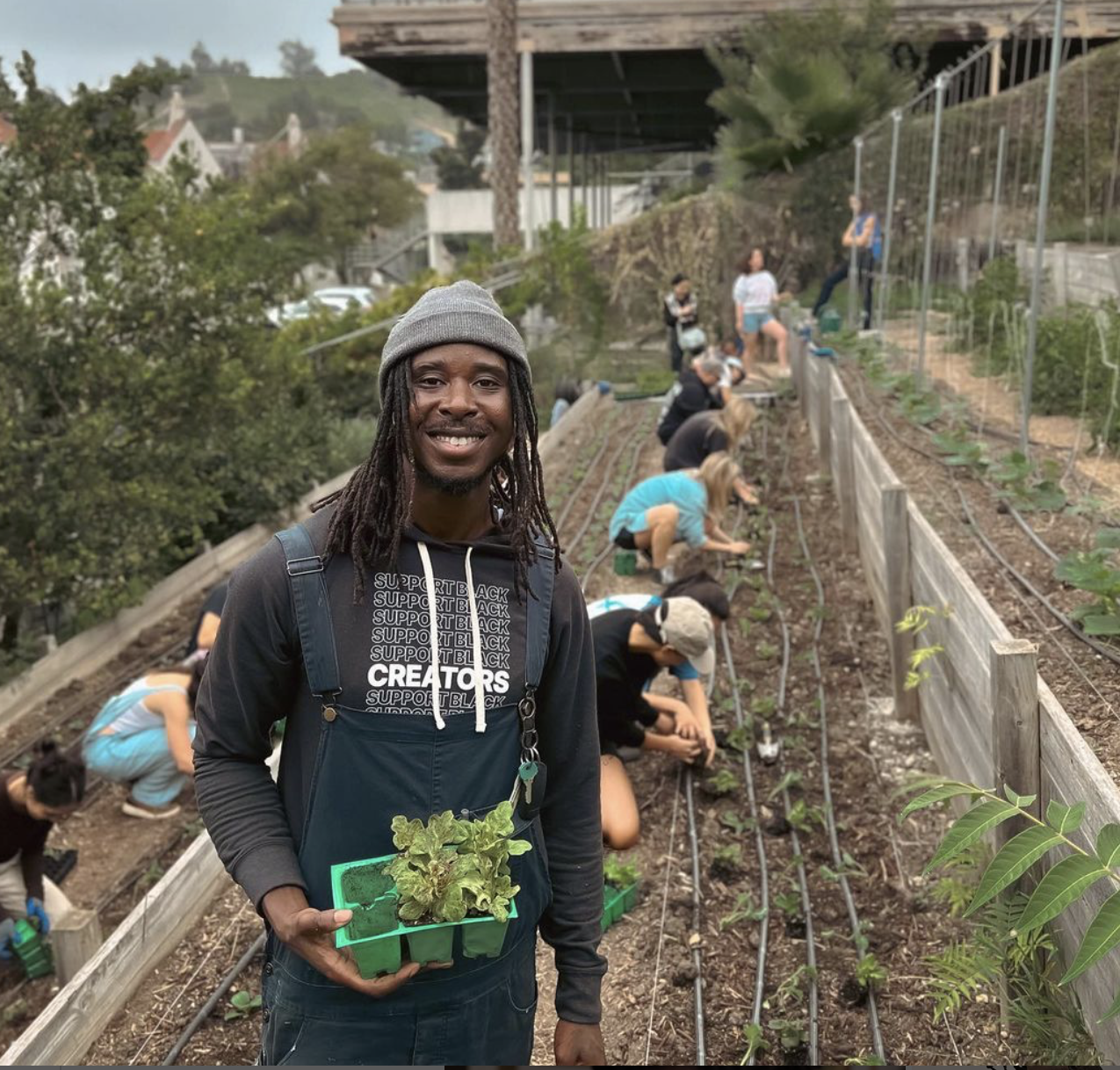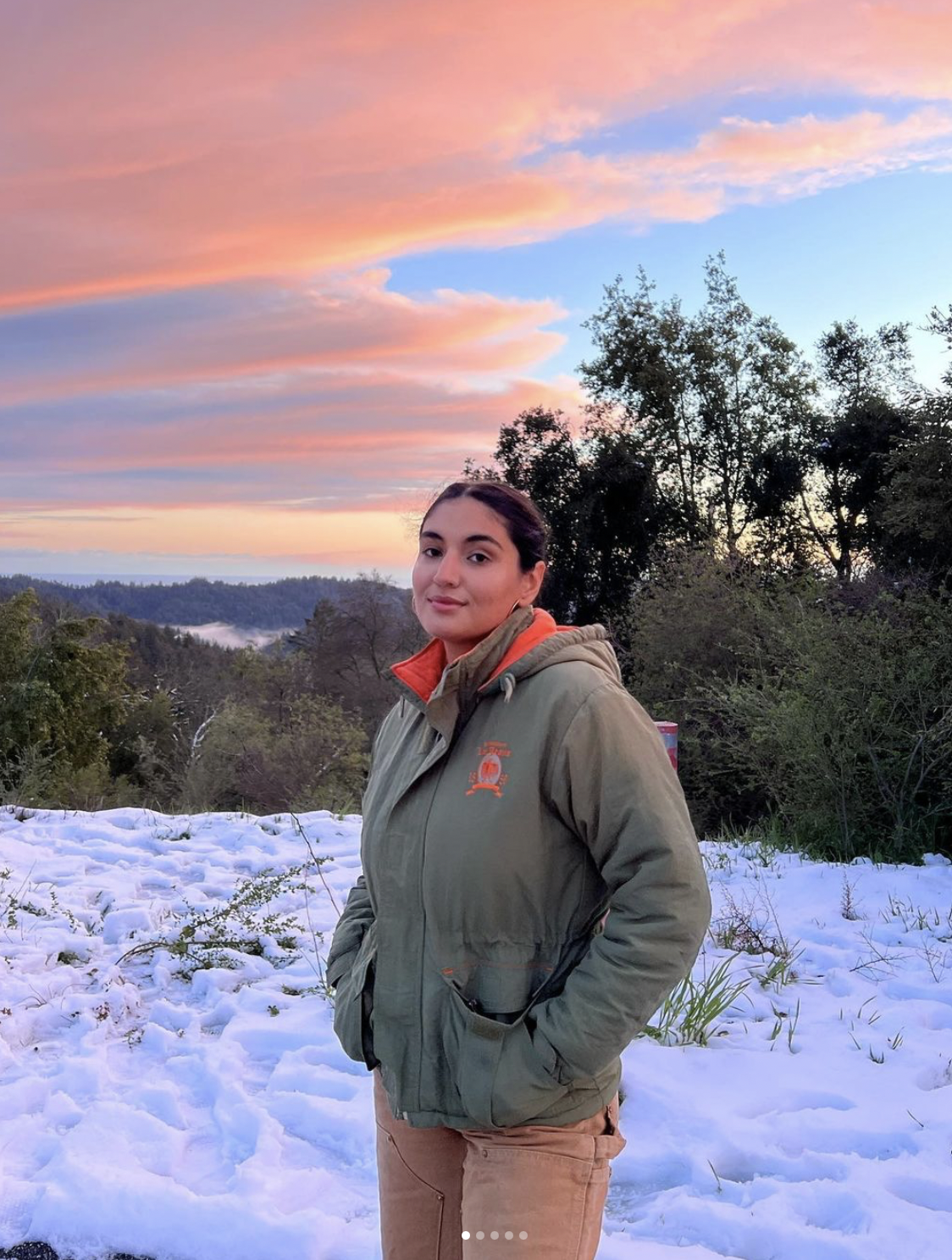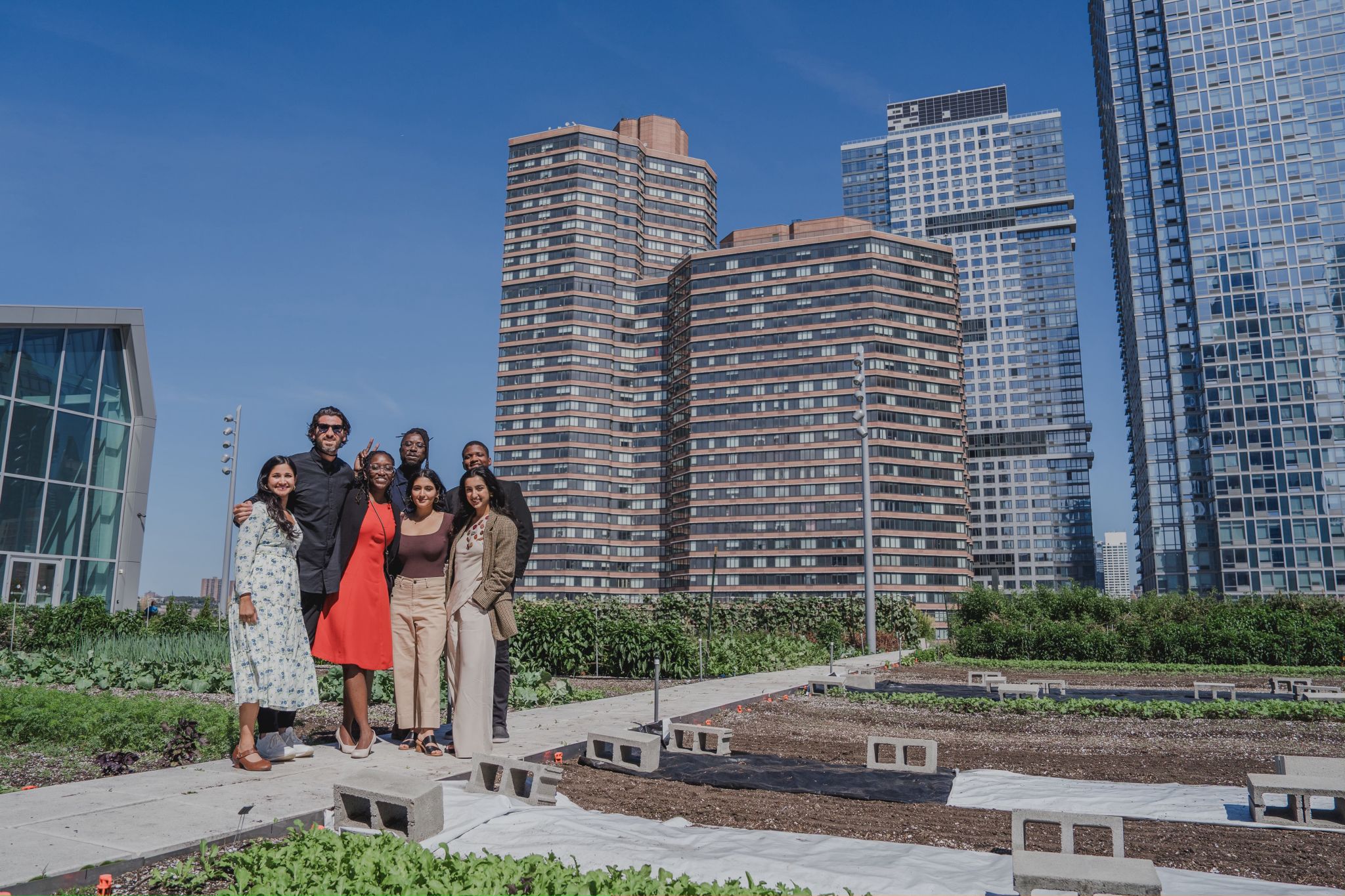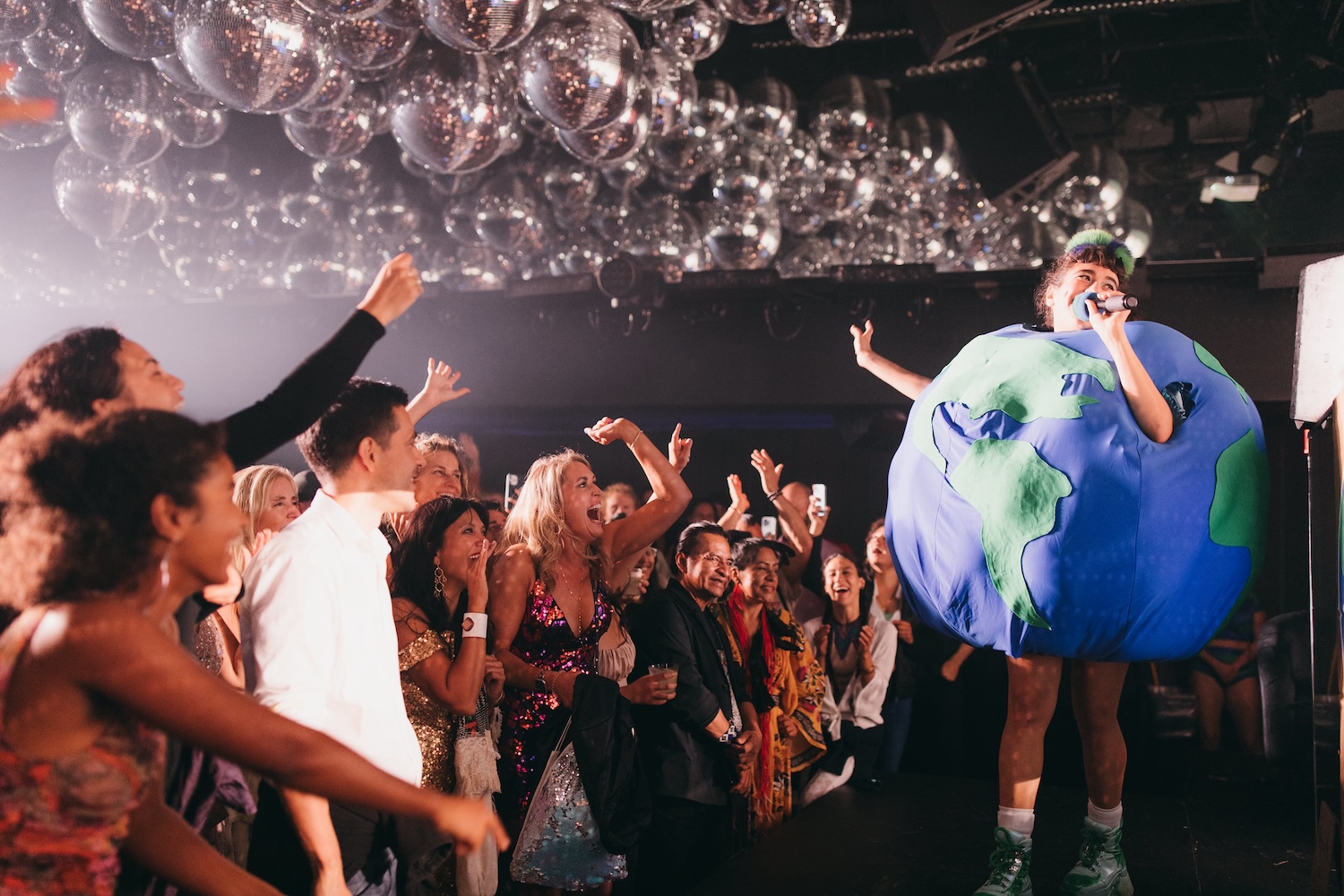
Young people repair clothes at a pop-up event on the sidelines of Climate Week in September. (Image: The Climate Group/Flickr)
Climate action and climate justice movements don’t always feel like spaces that recognize or welcome folks from diverse and underrepresented backgrounds. Effective storytelling can create a sense of belonging and inspire real action on the ground. Yet too often the power of storytelling is underestimated.
A rising chorus of young and diverse storytellers want to change that narrative, building on a growing body of evidence that demonstrates storytelling can change human behavior. Connecting personal narratives to the challenge of climate change sparks emotional responses that ease anxiety and promote a sense of agency rather than helplessness, according to a 2023 analysis published in Psychology Today.
That is the experience of a group of young climate activists who distilled their approach to effective storytelling in a panel discussion on storytelling for climate action and climate justice at the Nest Climate Campus event during Climate Week this fall.
As they shared their personal histories and experiences, six distinct themes emerged as the throughlines of an effective narrative to win not just the minds, but also the hearts of those who might feel disenfranchised or disaffected by the climate movement. Done well, storytelling around the climate crisis will:
- Invite a sense of belonging
- Create an emotional connection
- Acknowledge the importance of culture
- Actively engage the listener
- Embrace each person’s unique identity
- Offer solutions and action, not gloom and doom

Invite a sense of belonging
When he became interested in plants more than a decade ago, Nelson ZêPequéno said he was looked down on for working with flowers as a Black male.
“In our culture, it wasn’t encouraged for us to be in nature,” said ZêPequéno, a Los-Angeles-based artist and founder of the viral Instagram page @BlackMenWithGardens. “There is the traumatic history of our forced tutelage in the fields and a lack of access to these natural spaces. As a result, a lot of our culture is based on other things. It was more likely for me growing up to think that I could be an NBA player than a climate justice warrior.”
He began to see more and more people in his community interested in gardening at home and farming, but he saw few visual references to that growing movement. To bring these stories to light he started @BlackMenWithGardens, which today has more than 152,000 followers.
@BlackMenWithGardens features reposted stories of Black men and boys connecting with nature and chronicles ZêPequéno's own journey in the garden — creating a shared online space that allows people traditionally left out of this community feel included in it. Storytellers can do the same by being open about their own stories of entering a space that wasn't always inclusive and sharing their platforms with others who are navigating similar challenges, helping audiences to see they are not alone.
As ZêPequéno felt more connected to the environment and part of nature through plants, he brings the stories of “other men, boys, fathers, sons, uncles reconnecting with nature and, by doing so, encouraging them to take more stewardship for it,” he said.

Create an emotional connection
Sustainable fashion blogger, photojournalist and labor rights activist Aditi Mayer was inspired to make fashion her storytelling platform when she learned about the collapse of the Rana Plaza factory building in Bangladesh in 2013 — the garment industry’s worst industrial incident in history in which 1,110 lives were lost and over 2,000 people were injured.
“It got me thinking about the politics of labor in the fashion industry and to look at the ills of our dominant fashion model from a social and environmental perspective,” Mayer said. “As time went on, I got interested in the solutions part of the space. What does the alternative look like? From there, storytelling became a really critical tool.”
Today she is a self-described “multi-hyphenate,” using film, photography, and journalism to examine the fashion industry through a lens of decolonization and sustainability, including as a storytelling fellow for National Geographic. From her immigrant family, she learned the value of “using fewer resources, mending clothes and passing things down,” she said.
“Today I use my platform to challenge the Instagram influencer who never wears the same outfit twice to instead champion that sustainability is a lifestyle you embody,” she said. “I work from an emotional, heart-centered space, which I think is critical because if this work was about shocking statistics to make us act, we would have acted a long time ago.”
A key learning for Mayer as a storyteller was understanding the broader historical and cultural context of the issue she wanted to spotlight: environmental and social harm in the fashion industry. As she learned, an effective story isn’t about having all the answers but in asking the right questions of the right people, like the woman artisans of rural India whose stories and knowledge were often overlooked in the modern fashion industry.

Acknowledge the importance of culture
As a young girl spending her earliest years in her native Iran, Kiana Kazemi, co-founder and programs director for the climate justice collective Intersectional Environmentalist, recalled how her grandparents took her traveling all over the rich and varied landscape of the country, wanting to pass along a connection to the land. Those impressions stayed with her, and part of that legacy is a sense of optimism, she said.
“It was the first time I learned that my relationship to nature was deeply connected to nature, language, spirituality,” Kazemi said. “When I moved to the U.S. when I was 16 and heard about climate justice, all these ideas clicked for me — all these frameworks could exist together and make us better environmentalists and have a deeper impact on this earth.”
Kazemi works with her team at Intersectional Environmentalist to highlight diverse voices by offering training and consulting, creating resources and activations, and deepening awareness about environmental justice and solutions.
Climate storytelling often becomes more persuasive when people can connect on a deeper and more personal level. That could be how family heritage is intimately linked to nature and landscape, as in Kazemi’s case, or, for example, by acknowledging that connection to nature is also about language, spirituality or some other cultural touchstone.

Actively engage the listener
It was the story of Kenyan activist and Nobel Prize winner Wangarĩ Muta Maathai, who founded the tree-planting Green Belt movement, that inspired Clara Kitongo on her path.
Through her work as the tree equity manager of Tree Pittsburgh, Kitongo brings her Ghanaian roots of responsibility for the land to engage communities in creating healthy urban forests, she said. She finds that their active engagement makes all the difference.
While meeting with a group of elderly women about tree planting, Kitongo was struck by how the women’s memories of the trees they enjoyed in childhood “brought the entire project to life for them. I have learned not to assume I have all the solutions but to listen,” she said. It is the same experience when she meets with children and young adults. When she listens to their stories, they are more likely to engage.
Indeed, “the most important predictor of young people talking about their climate feeling was whether they felt listened to,” according to a recent survey of young people’s experience talking about the emotional impacts of climate change.
Similarly, when ZêPequéno gardens with Black men and boys, he encourages them to “get their hands in the dirt,” he said. “I want them to learn organically. With disaffected communities, that is the main way they will learn. Storytelling is a great way to indirectly teach someone something. It becomes a core value received through a narrative.”
Storytelling as an indirect teaching tool is powerful, as these activists found. Bombarding people with frightening facts and big numbers that don’t seem to have bearing on their own lives or communities can make people despondent or cynical. Stories, on the other hand, bring data to life and place it into a context, creating relevance about why it matters.

Embrace each person’s unique identity
For Jothsna Harris, founder of Change Narrative, her work to build capacity for the climate justice movement by using the power of diverse voices came after understanding the threads of her complex past. Her grandmother was a farmer in rural India, and her father immigrated to the United States in 1969 to create new opportunities for his family.
“I was raised knowing my worth and my value, but also that we should assimilate to be successful,” said Harris, who has farmed for the past eight years, following in her grandmother’s footsteps. “It has taken me years to unpack that and really understand we need to stand in our own unique identity.”
Her work today is dedicated to “shifting the narrative to include the perspectives and stories that are typically missing” and “the emotions and identities and vulnerability, as this is what connects us as human,” she said.
Storytelling that invites a sense of belonging for all people, no matter their background, is a vital tool for creating a narrative around climate action and justice that is more democratic and inclusive.

Offer solutions and action, not gloom and doom
Studies show that eco-anxiety — a chronic fear of environmental catastrophe as a result of the impacts of climate change — is on the rise. Sixty-nine percent of Gen Z respondents feel anxious after consuming content about climate change, according to a Pew Research Center study.
Storytelling can help assuage that anxiety. Young people “have been confronted with gloom-and-doom stories on media, of cities being demolished by climate disasters, and that is heartbreaking," Kazemi said. "But it is important that we talk about the solutions and the frontline communities that are really doing the action-oriented solutions work.”
Harris agreed. “Any culture movement I can think of has always included the power of narrative as the underbelly. When I think of social movements, I think about the stories,” she said.
The key in shifting to a more positive narrative is to tap into every human being’s connection to nature, which will almost always create the space for a deeper understanding of how climate change is threatening that connection.

Great storytelling passes the mic to climate heroes
Matt Scott, director of storytelling and engagement at the climate solutions nonprofit Project Drawdown, knows the power of story through his role as the producer of “Drawdown’s Neighborhood,” a documentary series that highlights unheralded climate heroes.
“For a long time, I did not connect with the culture of the environment and the stories being told. When you don’t see yourself represented, you don’t enter those spaces,” Scott said. “Today my role is to pass the mic to climate heroes whose stories aren’t heard as often and to elevate climate action in the process.”
Bringing underrepresented groups into the story circle is a critical element in climate justice, Harris said. “These are the people experiencing not only a disproportionate amount of the impacts but who have proximity to and perspective on the issues. Their stories are the essential testimonies needed to understand how to incorporate justice into the solutions we’re seeking.”

Based in Florida, Amy has covered sustainability for over 25 years, including for TriplePundit, Reuters Sustainable Business and Ethical Corporation Magazine. She also writes sustainability reports and thought leadership for companies. She is the ghostwriter for Sustainability Leadership: A Swedish Approach to Transforming Your Company, Industry and the World. Connect with Amy on LinkedIn and her Substack newsletter focused on gray divorce, caregiving and other cultural topics.














